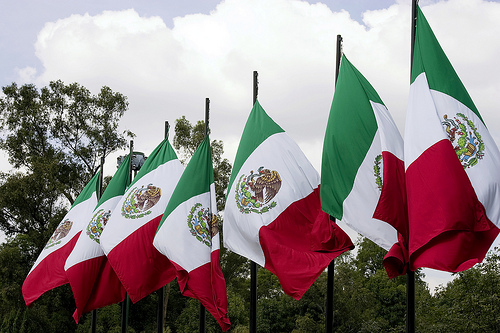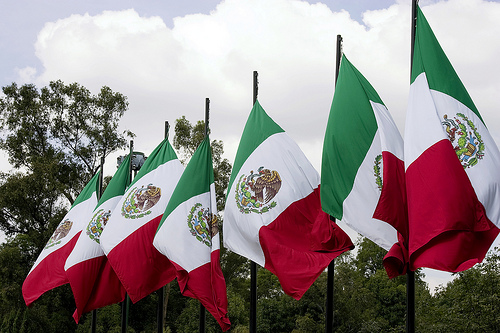 Photo: Hygiene MattersAs someone who has lived in Mexico and who still visits the country regularly, news reports like this break my heart:
Photo: Hygiene MattersAs someone who has lived in Mexico and who still visits the country regularly, news reports like this break my heart:
Drug-related violence over the weekend claimed 51 lives across Mexico, including 15 decapitations in the beach resort of Acapulco, authorities reported.
Such stories have become the norm — and the dominant lens through which we estadounidenses view our neighbors to the south. Bombarded with news of grisly murders, U.S. citizens now tend to dismiss Mexico as a narco-state and think of it only to gawk at the spectacular violence (and as the inspiration for certain fast-food dishes).
There is, of course, an element of exaggeration in the coverage. The drug violence is unspeakable, but limited to a few — admittedly expanding — geographical areas. For instance, Mexico City, for all of its reputation for high crime rates, remains mostly free of the gangland-style violence gripping, say, Acapulco. But no one can deny the power of the drug cartels, or the harm they’re inflicting on the country.
So how, precisely, did the drug trade become such a prominent player in Mexican society? That question does not get asked enough. I’d argue that the drug trade has grown roughly in proportion to the long, slow decline in the legitimate Mexican economy.
To put the story briefly, Mexican policymakers in the 1980s decided to “modernize” the economy by pushing millions of smallholder farmers off of their land and into jobs in what was supposed to become a booming manufacturing sector. The idea was that Mexico would become the manufacturing base for the United States. The effort culminated in the passage of NAFTA in 1994, which allowed goods and investment capital (but not people) to flow freely across the border.
But the pro-trade policy, still pursued by the present government, has failed miserably. Millions of farmers did exit the land, but the manufacturing boom promised by NAFTA never fully materialized. China, where labor is even cheaper and more plentiful, emerged as our manufacturing base instead. In place of a manufacturing miracle, the Mexican people got an economic void — which the drug trade has more or less filled.
And as the ace Tufts researcher Tim Wise argues in the YouTube video below from the Real News Network, U.S. involvement in the Mexico meltdown goes beyond our role as ultimate consumer of the narco trade’s products. Our agribusiness industry used NAFTA as a bulldozer with which to shovel cheap corn and other food products onto Mexico — costing farmers there hundreds of millions of dollars per year in lost business. Those same farmers simultaneously endured the removal of government support as mandated by NAFTA — a double-bind that has created a kind of permanent agrarian crisis in Mexico.
Did the NAFTA-inspired gusher of cut-rate U.S. product at least make food cheaper for Mexicans struggling under the yolk of economic crisis? No, says Wise; it turns out that two companies own 90 percent of the tortilla market, and they opted to pocket the benefits of cheap corn, not pass them on to consumers.
One quibble with Wise: he says in the interview that the two tortilla titans are Mexican-owned; but actually, the larger of them, Gruma, is partially owned by U.S. corn-processing giant Archer Daniels Midland, which holds about a 23 percent stake in the company. (Back in 2006, I told the twisted tale of how Gruma got its stranglehold over the Mexican tortilla market.)
Wise is releasing a major report on Mexico and U.S. corn dumping on Jan. 18. I’ll return to these themes soon after. In the meantime, here’s his take on how U.S. agribusiness behaves in Mexico.



